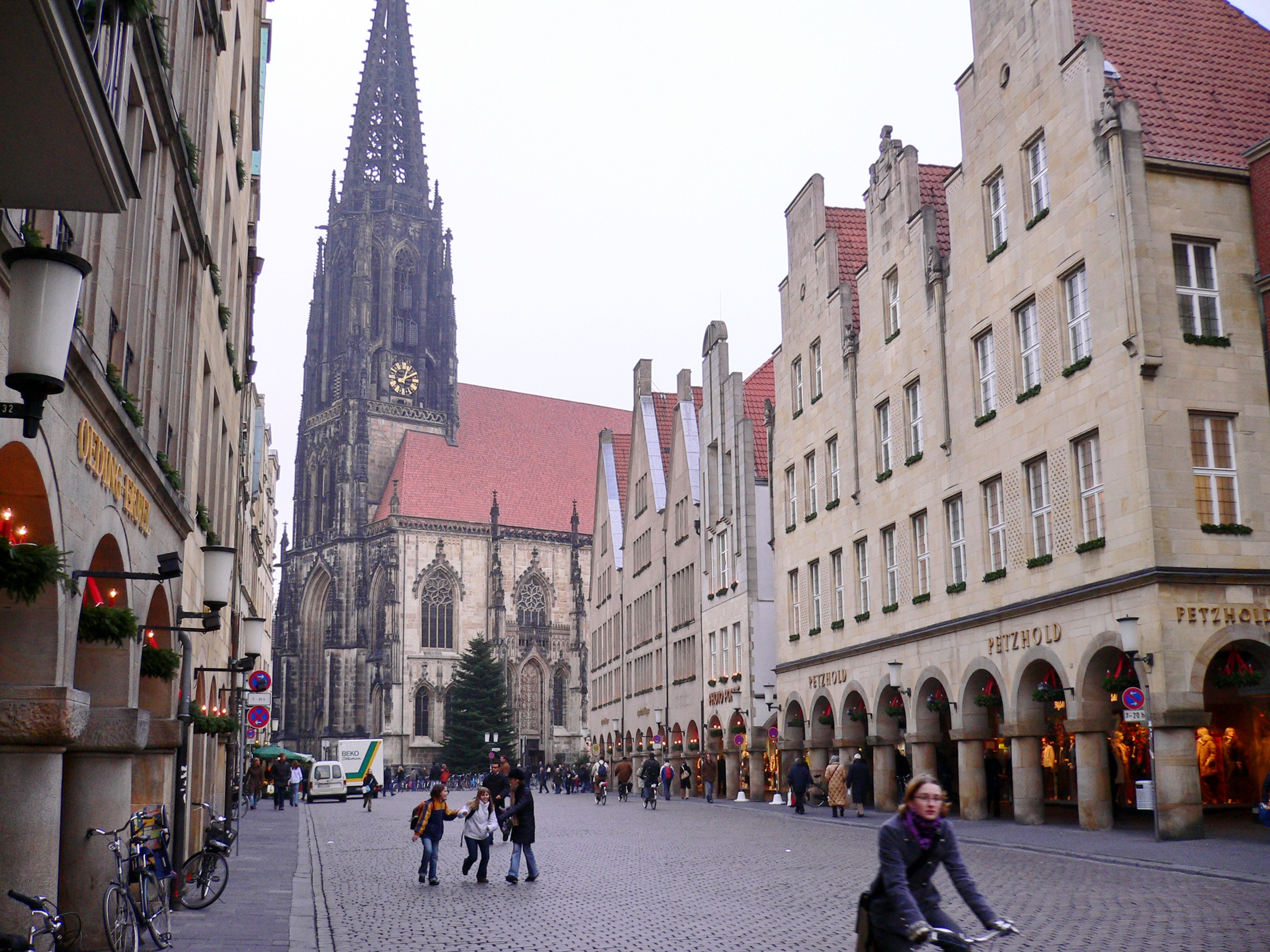

Münster, which is the largest city in Westphalia, is a university town with ideal conditions for cycling. The Promenade, a green belt and avenue around the city centre, is used by cyclists and pedestrians both as a normal everyday route and as a recreational area. In many places, the Promenade broadens out to form tranquil and quiet parks.
The city centre is one reason for Münster’s reputation as an attractive and pleasant place to live. For the most part traffic-free, the centre is the main shopping area and the focus of cultural activity. Besides the market on the Domplatz (Cathedral Square) on Wednesdays and Saturdays, part of its charm comes from its many cafés and restaurants with outside tables, not to mention the hidden paths along the river Aa. In addition, the covered footpaths and shopping arcades provide shelter from bad weather.
Despite extensive destruction during the 2nd World War, Münster has numerous architectural monuments. It is worth visiting the historical Town Hall, where the Peace of Westphalia and hence the end of the Thirty Years’ War were negotiated. The Erbdrostenhof (Erbdrosten Court), Prinzipalmarkt and the Castle with the Botanical Garden and glasshouses are further places of interest.
The cathedral (with cloister and treasury), the Lambertikirche (Church of St. Lambert), the Clemenskirche (Church of St. Clemens) and many other churches dominate the townscape. The variety of styles in the interiors of these churches is particularly impressive. A small contemporary garden behind the Clemenskirche is an ideal place to take a short break. More information on the history of the town and its churches is provided in the town museum.
But there is also room for modernity in Münster, e.g. in the Picasso Museum, the Westfälisches Landesmuseum and the exhibition building at the harbour – an area of the city which has been undergoing change for many years. Time should also be set aside for a visit to the Aasee (Aa Lake), Mühlenhof Open-air Museum and the All-weather Zoo.